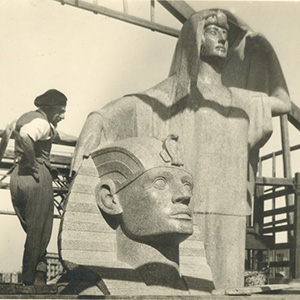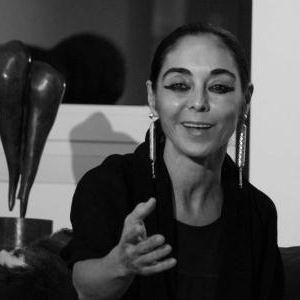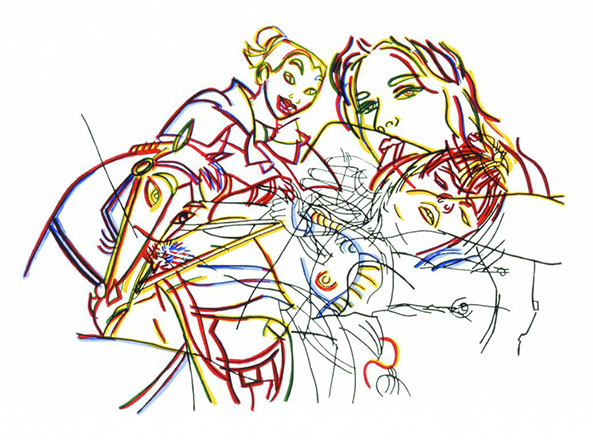On March 14, 1925, Abdel Hadi el Gazzar was born in Alexandria. Forty one years later, on March 7, 1966, Abdel Hadi el Gazzar passed away in Cairo. To celebrate one of Egypt’s undisputed modern art pioneers and greatest masters, The Egyptian Museum of Modern Art exhibited some of Gazzar’s works from the Museum’s storage that had not been displayed in recent history. The presence of Layla, the wife and Fayrouz, one of the 3 daughters, was as magical and emotional as the masterpieces displayed.
Ibn el Kelab el Nahs (The Damned Son of a Bitch)drawing has rarely been displayed to the public, with a title and a poem, written by Gazzar, as provocative as it possible can. Painted in 1953, the work depicts a fantastic tree emerging out of a woman’s face with an owl on the tree’s trunk. On the left side of the tree, a woman sits, mourning, with her hair mingling with the tree’s hairy branches. Many narratives exist about what Gazzar aimed to explain through this drawing – yet it remains a mystery. The left part, showing a heavy woman beating a man lying on the floor on his stomach, probably refers to the enigmatic title of the drawing.
Another work,The Theater of Life, 1948, oil on cardboard, defined as Gazzar’s most important work, had led to his arrest by King Farouk.
“The young Egyptian Revolution has been, in some way, the result, the confirmation and the triumph of the social consciousness represented in the work, the message and the pressure coming through the expression of young Egyptian painters.”e; Aimé Azar’s remark, which appeared inLa peinture moderne en Egypte, Cairo, Editions Nouvelles, 1961, refers to the impact of Gazzar’s masterpiece showing 8 adults and one child, standing in front of emply plates, giving it credit, amongst other artists’ works, in creating a certain social unease that culminated in the 1952 Revolution that overthrew the King and turned Egypt into a Republic.










